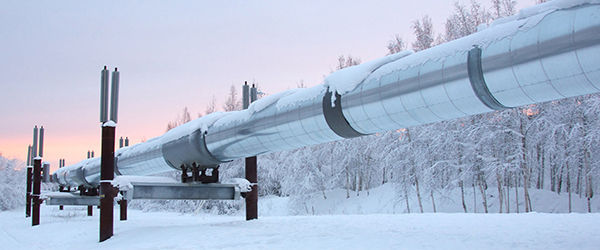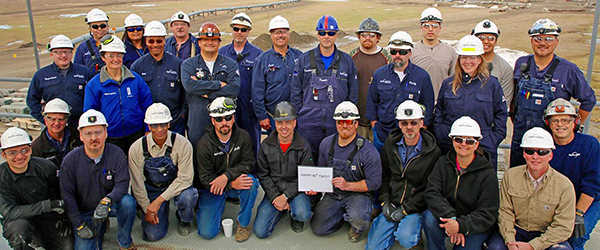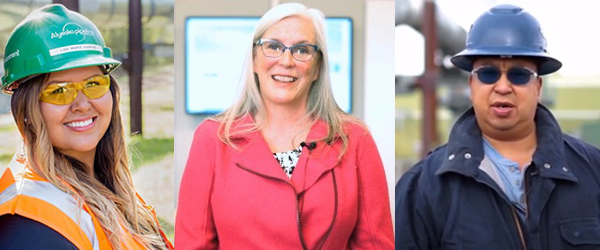Alyeska teams clean Yukon River boat launches for safe sailings
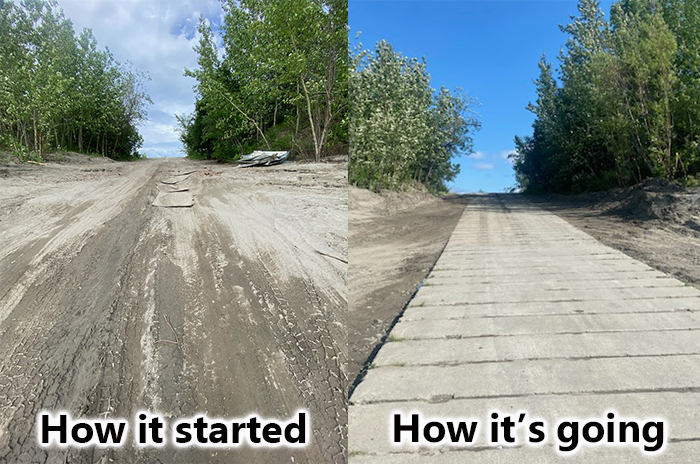 During 2023 spring breakup, the Yukon River near the Dalton Highway bridge swelled to levels never seen by area residents, reaching 20 feet higher than its usual surface level. When downriver ice dams finally broke and the Yukon receded, two feet of dense silt blanketed and hardened over everything that was once submerged. That included two popular boat launches near the bridge.
During 2023 spring breakup, the Yukon River near the Dalton Highway bridge swelled to levels never seen by area residents, reaching 20 feet higher than its usual surface level. When downriver ice dams finally broke and the Yukon receded, two feet of dense silt blanketed and hardened over everything that was once submerged. That included two popular boat launches near the bridge.
These are vital access points for residents and recreationists of Yukon River communities. The launches serve homesteads and fish camps, and are used by state and federal agencies, including the Alaska State Troopers, BLM and Fish & Game, and, of course, Alyeska’s Yukon Response Base (YRB) personnel and their oil spill response vessel fleet.
“I’ve been on the river my whole life and I’ve never seen it that high,” explained Ramy Brooks, Alyeska’s YRB Civil Maintenance Coordinator. “And after the silt deposits settled, the boat launch areas were in really bad shape.”
Worse, early summer rains made the launches and their steep slopes slippery and unsafe. Even when dry, the launches were dusty and quickly rutted, a hazard for vehicles backing in while towing trailers and boats.
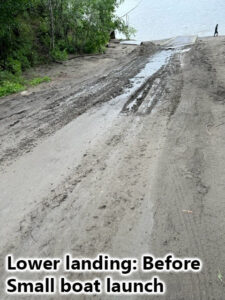
There was a question of ownership on who should clear the area, but no one was stepping up. So, after a few weeks of concern about the launches, members of Alyeska’s YRB team – from leaders like Ramy to Baseline and Teamster operators, OSCP and Environment – were able to get a rocket-fast turnaround on permitting and make an even faster cleanup of the launches, including appropriate disposal of around 200 yards of silt material.
Today, the concrete launches are safe, smooth and practically as good as new.
“This was a win-win situation,” said Lee McKinley, the Alyeska Environment team’s Fish & Wildlife SME who helped obtain a critical permit for the work. “This boat launch, while important to Alyeska, is also a critical piece of infrastructure that is used for access by multiple user groups and villages up and down the Yukon River.”
—
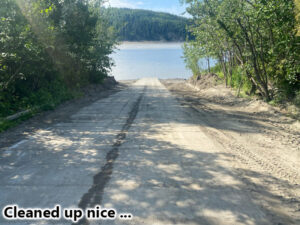
Before the cleanup, YRB leaders Ramy and Phil Huelskoetter, Civil Maintenance Coordinator, were concerned about operator safety and damaging their response boats when backing down the launches.
With a response exercise for YRB crews and its partners in mid-July looming, a sense of urgency set in. In late June, the YRB and Alyeska’s Environment teams elevated the need for maintenance and action.
Lee and Land & ROW Lead Pete Nagel worked on permitting. Pete confirmed that as long as the silt wasn’t pushed back into the river, a lands permit wasn’t necessary. Lee contacted Fish & Game, sending photos and a description of the potential clean-up work.
Lee followed up, getting a meeting to further discuss the importance of the work, requesting a multiyear permit for future maintenance. The Joint Pipeline Office’s ADF&G Liaison approved a 5-year fish habitat permit that day.
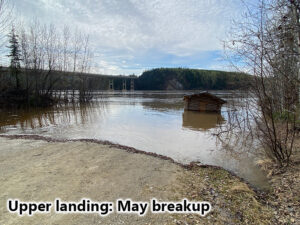
“Lee was instrumental in working with Fish & Game and getting a permit in a timely manner,” Ramy said.
The next day, Ramy and his crews hit the silt. With a 930 CAT Loader and end-dump trailer operated by a Baseline member and a Teamster, they moved almost 200 yards of silty material off the ramps. They cleaned up the runs before reaching concrete, and delivered the silt to the nearby Yukon River Camp, a tourism business whose owners were happy to receive any fill following a winter of work on site.
Then a few operators, a laborer and Ramy scraped down the silt and gravel with a loader. Close to the concrete, the machinery stopped and manual labor started: they shoveled the last bit down to the concrete.
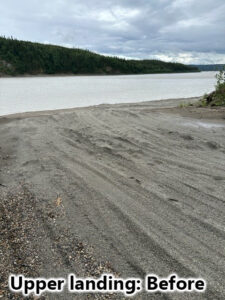
While shoveling, a local man stopped by and, Ramy recalled, he said, “This is so much better! Got another shovel? I want to help out.”
By the end of that day, the work was complete, the silt was offsite, and those important ramps were clean, safe and being used often.
“We’ve had so many people thank us – they really appreciate the opportunity to safely access the river,” said Ramy. “Some State Troopers came back to the landing after we cleaned it and they said, ‘Man, thank you!’ … The Chief of Stevens Village happened to land his boat that day, too, and he said, ‘Thank you for taking care of that. This helps so many people.’”
* Thank you to Lee McKinney and Lisa Kangas from Alyeska’s Environment team for sharing the photos!
